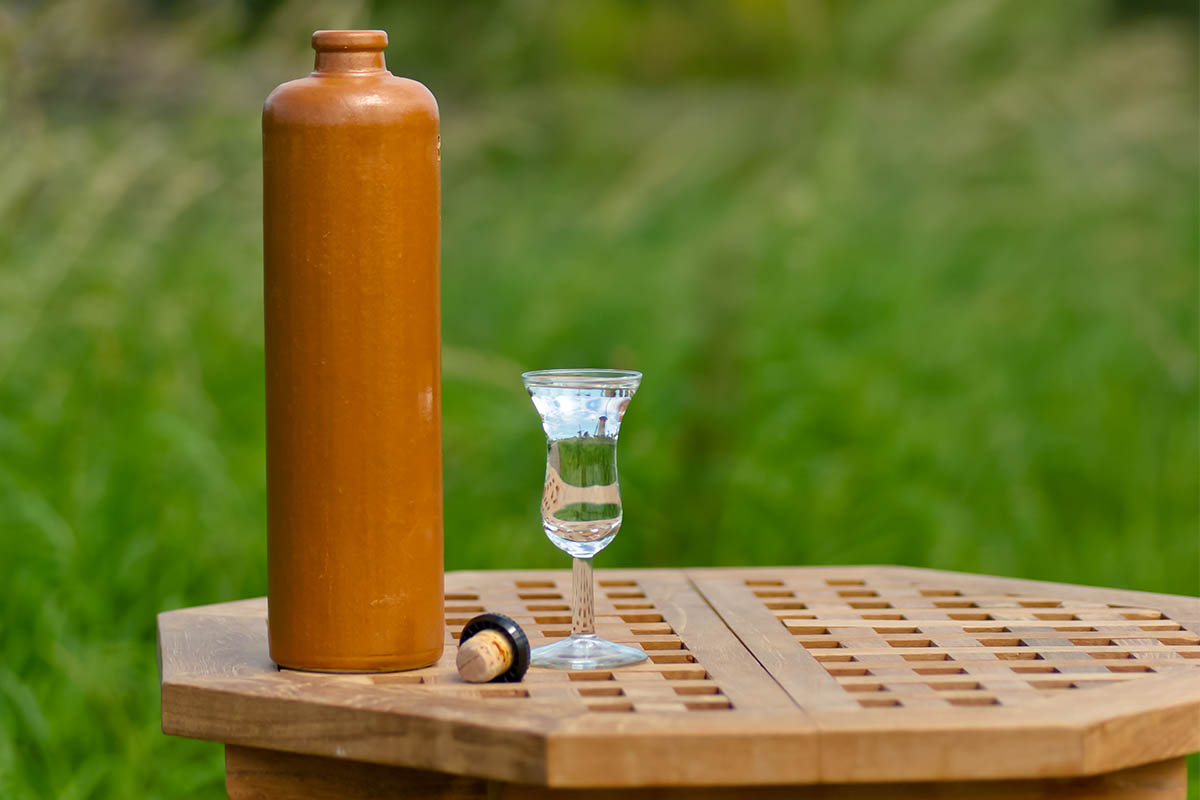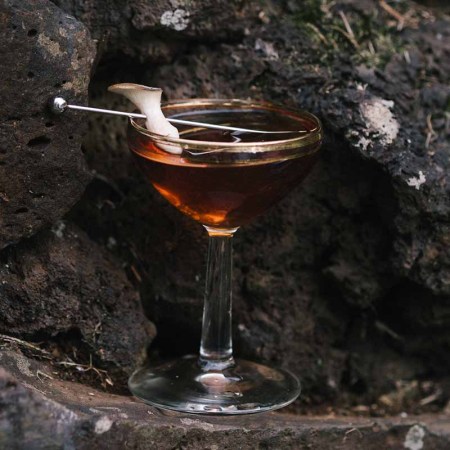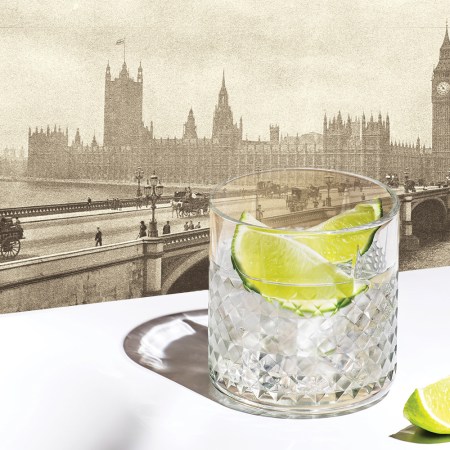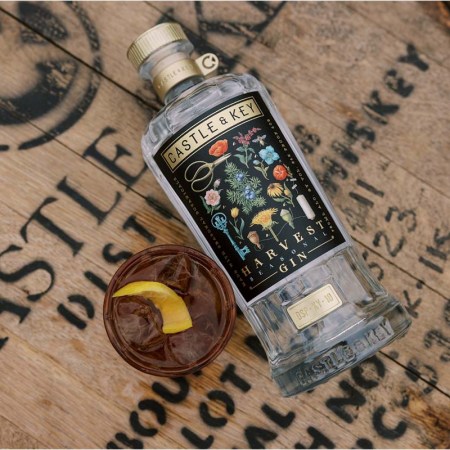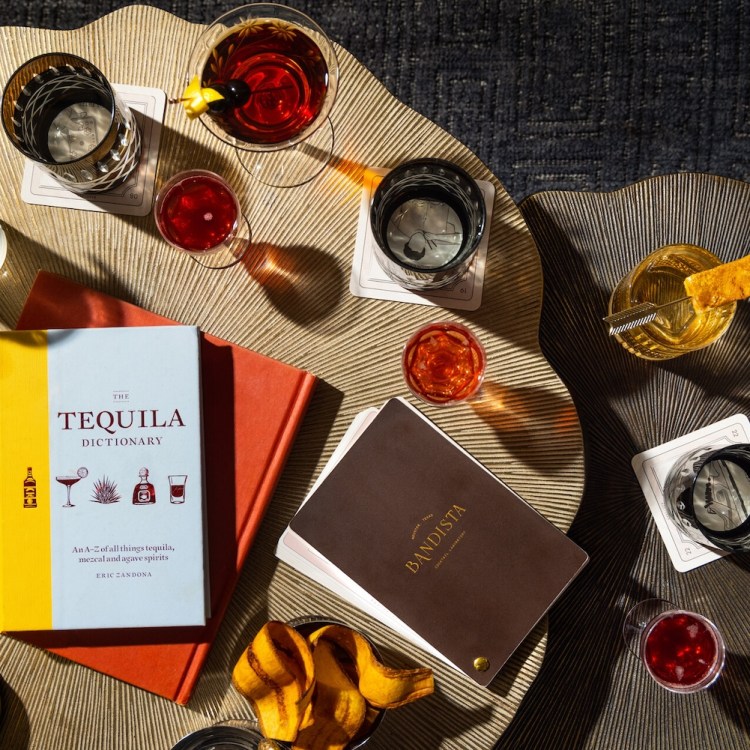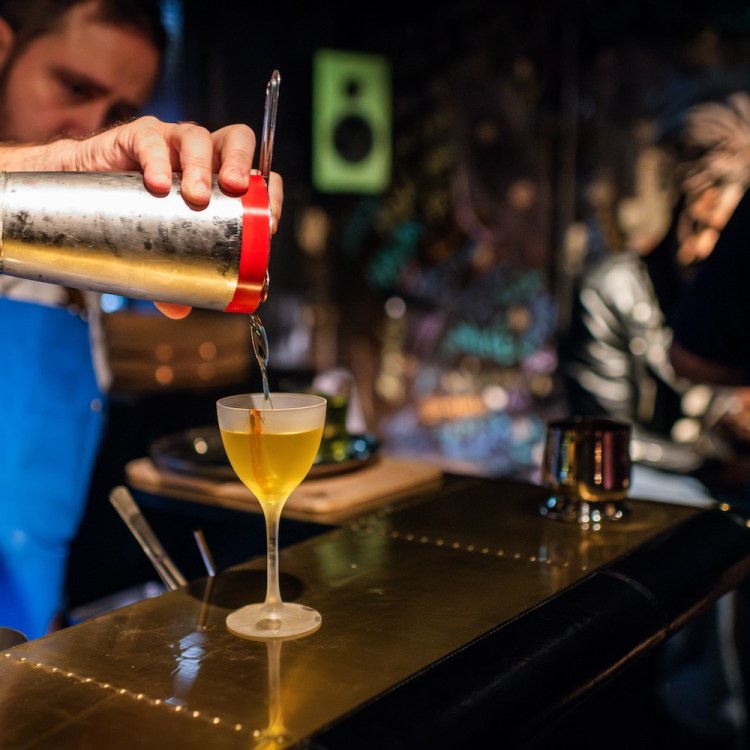If you like gin, you should try genever. If you don’t like gin, well, you should still try genever.
Though the two spirits share historic roots and genever is often presented as an archaic sub category of gin, genever really does stand on its own. It was one of the most important ingredients in the development of American cocktail culture, and it deserves renewed appreciation today.
Despite its prominent role in the early cocktail canon, few in the contemporary United States know much about the spirit. So before getting into how to drink genever, let’s talk about what it is. Like gin, it is flavored with juniper. Unlike gin, however, it doesn’t necessarily taste like juniper; if you’re expecting the piney bite of a London dry, for example, you typically won’t find it in a genever. Also unlike gin, which is all about highlighting botanicals against a neutral background, a good genever emphasizes its malty spirit base. Typically made from some combination of corn, rye, wheat or barley, genevers are full of grain character and may offer no more than a whisper of juniper.
Like pretty much every other spirit we now drink for fun, genever started out as an allegedly medicinal tonic. References to rustic distillates made with juniper berries date back to the thirteenth century. In the region around Holland and Belgium, these spirits evolved as distillers refined their art. Genever came into its own as a spirit that’s rich, malty and fairly whiskey-like, often including barrel aging of some expressions.
Gin essentially came about as an English knockoff of this continental spirit, with English distillers heaping in juniper and other botanicals that overwhelmed the distillate’s grain profile. Gin followed its own delicious path and eventually came to overshadow genever through popular drinks like the martini, gimlet and gin and tonic. Up until the late 1800s, however, it was genever that was poured into American cocktails, frequently under the guise of “Holland’s gin.” To recreate the classic cocktails of that era, real genever is essential.
That phrase “Holland’s gin” obscures more than it illuminates. The profile of genever can be radically different, so mixing a malty genever into a gin cocktail leads often to disappointment. The spirit often plays better in whiskey cocktails where its heavy, grainy notes feel more at home. Ultimately, though, genever is neither a gin nor a whiskey. It’s its own thing, and you can really only understand it on its own terms.
When I started my bartending career, genever was pure unobtainium in the United States. Cocktail historian David Wondrich’s 2007 book Imbibe!, one of the texts from which I learned the art, suggested that the best we could get by with at the time was the inadequate substitution of blending Irish whiskey, dry gin, and a touch of sugar. Today, fortunately, a variety of real genevers are available here. And while we don’t enjoy anywhere close to the wealth of options available in Holland or Belgium, we do get some excellent selections from the category.
Below we’ll look at a few brands worth trying, but first a note on terminology. Genevers are classified as either “oude” (old) or “jonge” (young). Confusingly, this distinction refers not to barrel aging but rather to historic styles. Oude genevers are made with a higher proportion of the whiskey-like malt distillate known as malt wine, at least fifteen percent and often much higher. Jonge genever is a lighter, more botanical style that became popular in the twentieth century. It has its place, but we’re mostly talking about the oude stuff here; it’s the more unique spirit, better both for drinking straight and for recreating vintage cocktails. (There are other esoteric distinctions once you get deeper into the genever category, but the oude vs. jonge division is the most relevant for the U.S. market.)
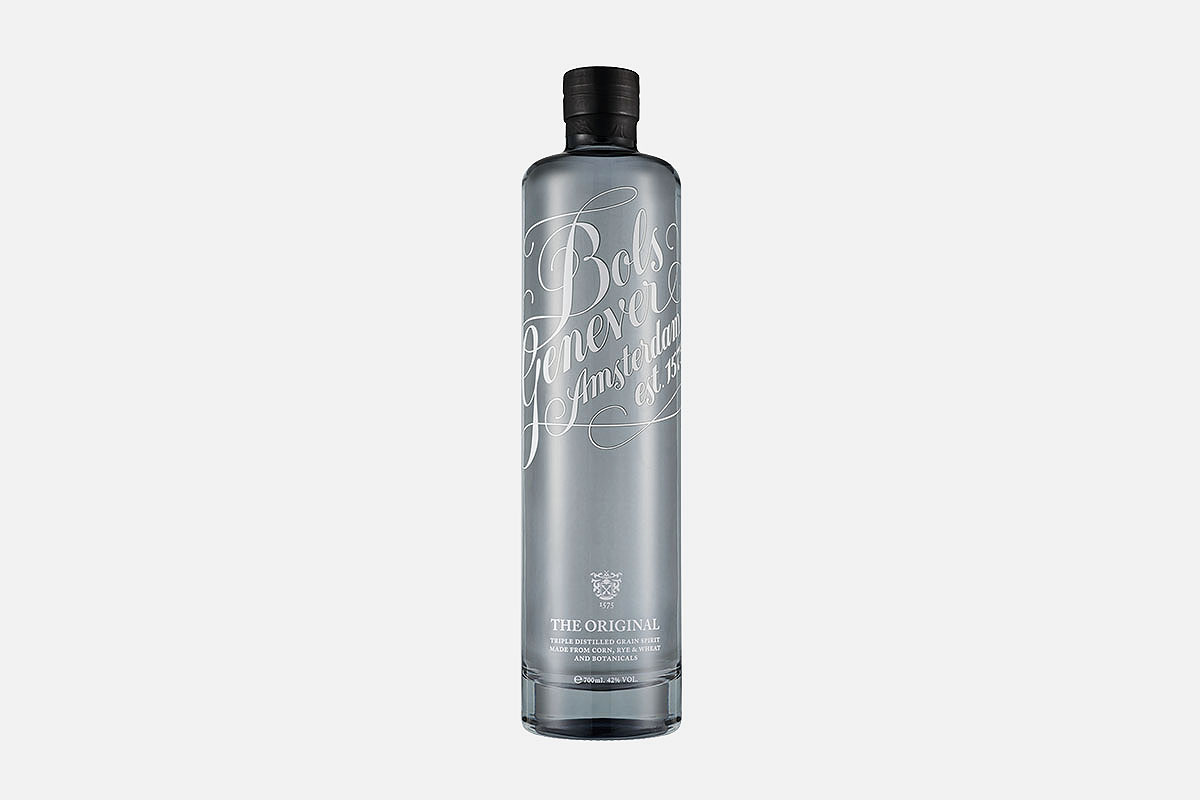
Bols
Bols is the brand most responsible for reviving genever in the U.S. and the one that’s most widely available. Their standard genever in the gray glass bottle is a fantastic introduction to the category, with a burly maltiness that will stand up to mixing. Rounding out the portfolio is a barrel aged expression that’s smoothed out after an 18-month stint in oak, and an intensely grainy 100% malt genever that’s un-aged and comes in at a higher proof. Both are sold in striking clay jugs and will appeal to anyone wanting to take their genever in a whiskey-like direction.
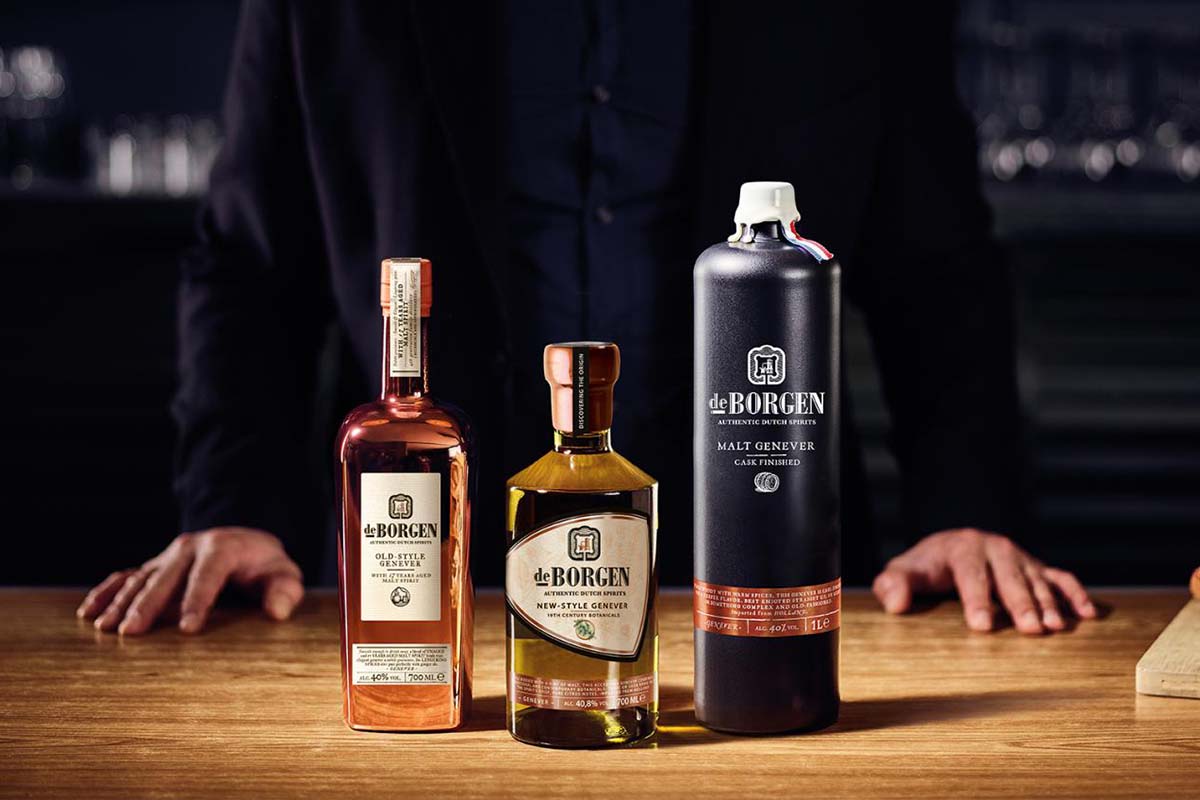
De Borgen
To taste the spectrum of genever styles, it’s hard to beat a flight from the Dutch company De Borgen. Their new-style genever offers just a hint of malt on the finish, with juniper and citrus taking center stage in a more gin-like spirit. Their old-style bottling blends un-aged malt wine, seventeen-year-old malt wine, and juniper distillate for a much heavier genever with versatility in both shaken and stirred cocktails. The highlight of the line, however, is their cask-finished malt genever, a distillate of rye, wheat, and corn seasoned in Oloroso sherry casks; the oak influence makes it delightful for sipping neat or mixing into spirit-forward stirred cocktails.
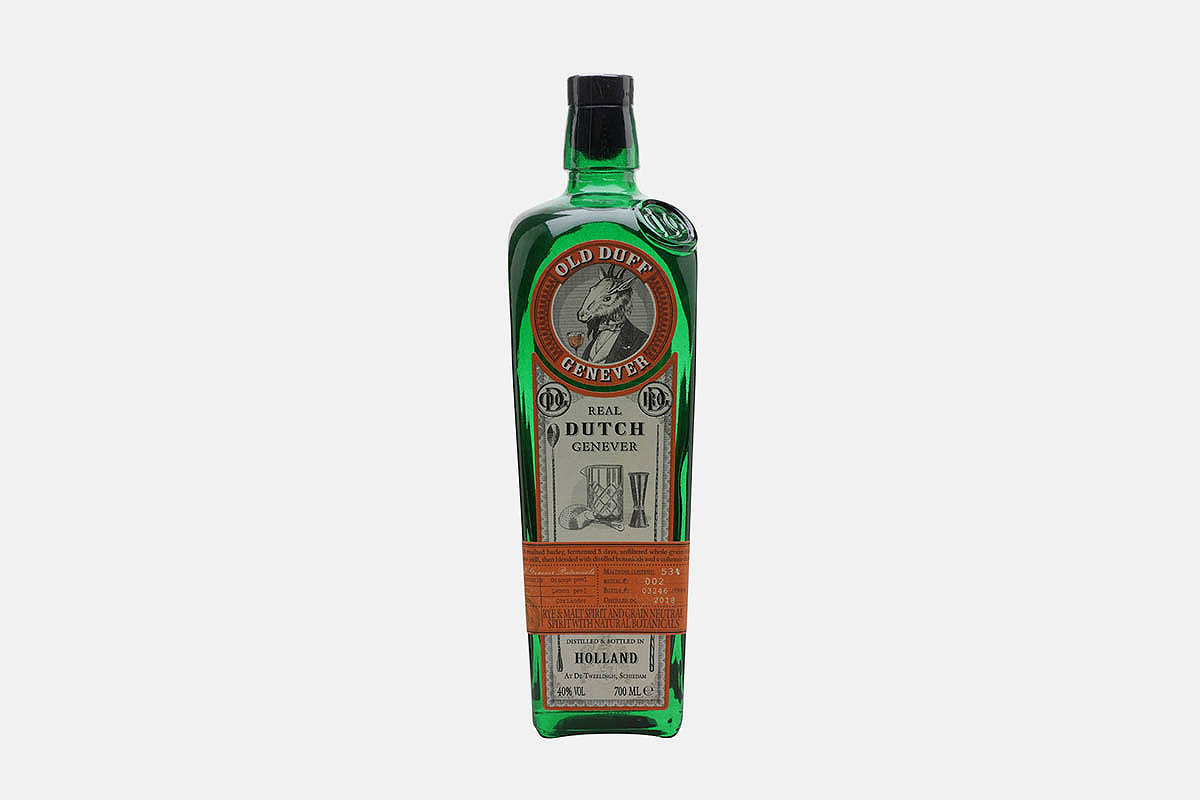
Old Duff
Old Duff leans into malt for both of expressions. The standard Old Duff is made from a mashbill of two-thirds rye and one-third malted barley, with malt wine making up more than half the spirit, and flavoring from six botanicals. The Old Duff single malt is made with one-hundred percent malt, simplifies the botanicals to just two – juniper and hops – and weighs in at ninety proof. Both are distilled in the historic distilling town of Schiedam, making them among the few genevers sold in the US that are made entirely in Holland.
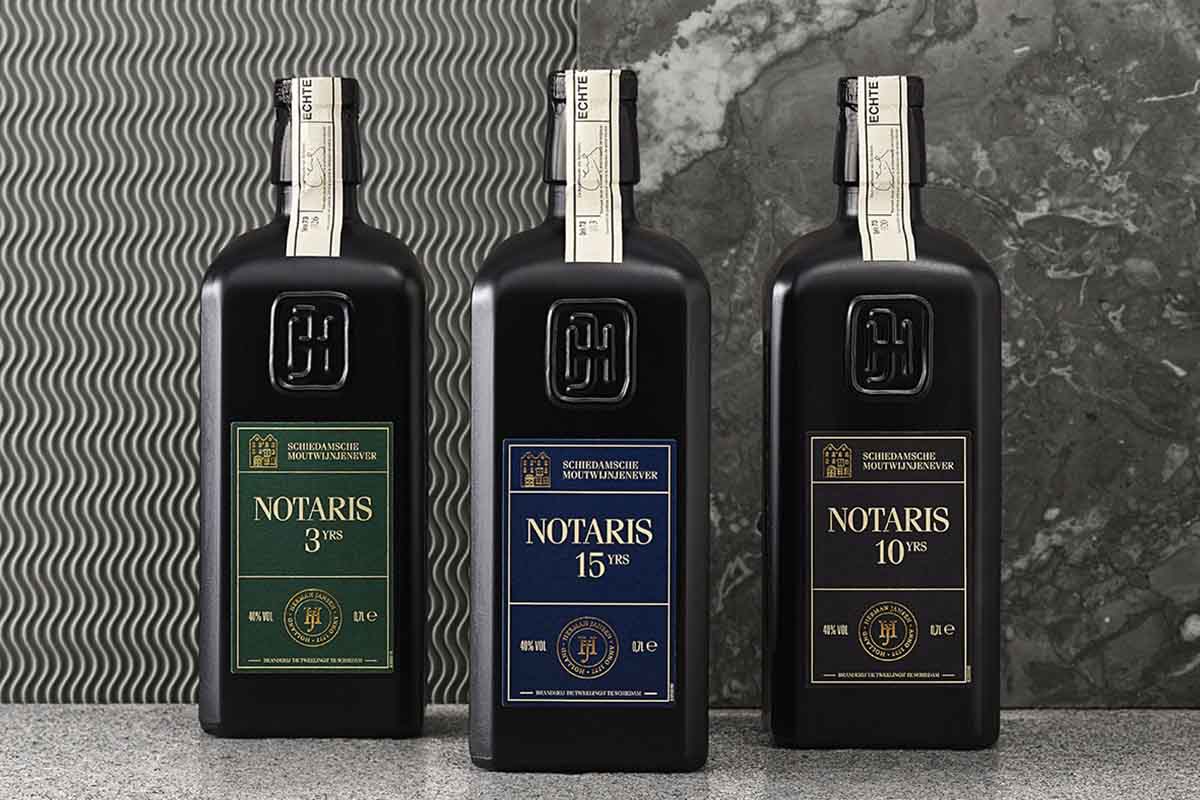
Notaris
The Dutch company Notaris exports three genevers to the US, all of which are worthy of attention. Their three-year-old spends that duration in oak and combines a sweet note of vanilla with an assertive botanical profile. The Notaris “Bartenders Choice” is crisp and very malt-forward, an ideal choice for cocktails. And the “Bartenders Choice Rome,” made in collaboration with the Jerry Thomas Project in Rome, blends a rye distillate with ten- and fifteen-year-old spirits for a strong, sippable, and premium-priced genever.
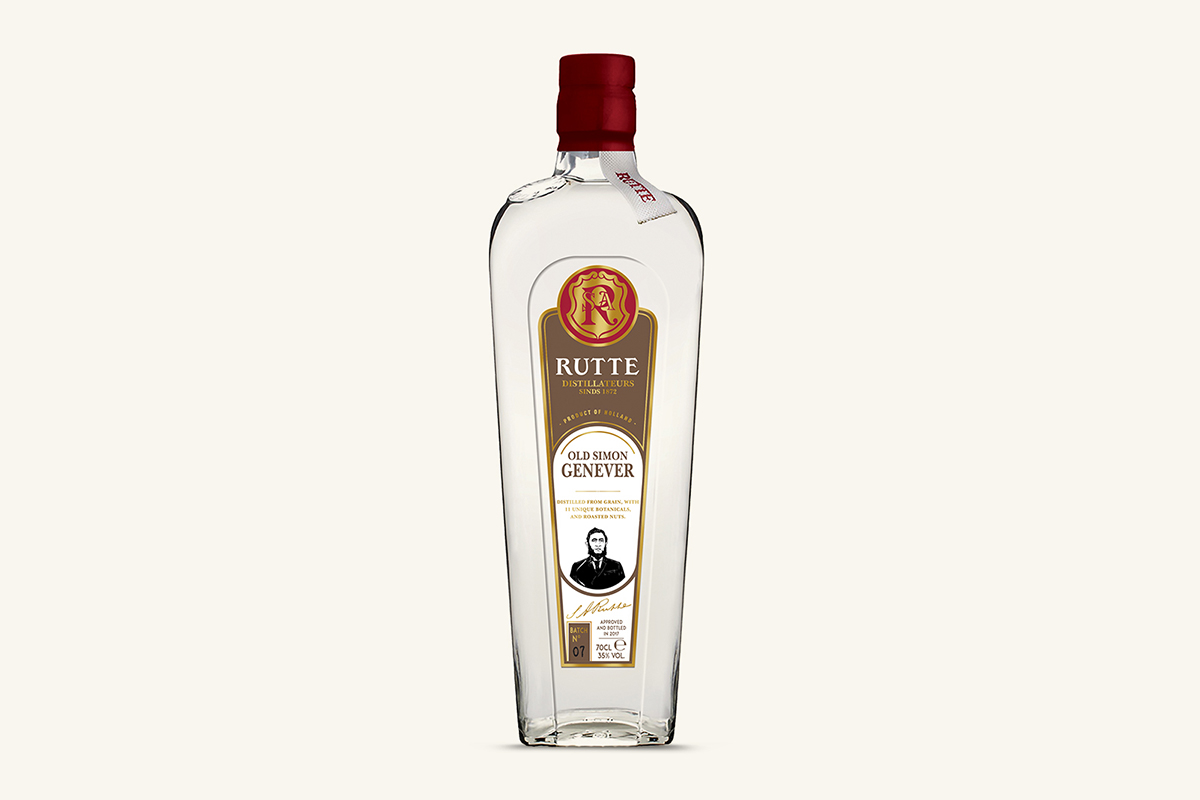
Rutte
Rutte is a Dutch distillery with a history dating back to 1872, currently exporting a variety of gins and genevers to the US. Their Old Simon genever is a soft, gentle take on the spirit with a pronounced nuttiness coming from walnuts and hazelnuts and a sweet note of cacao on the finish.
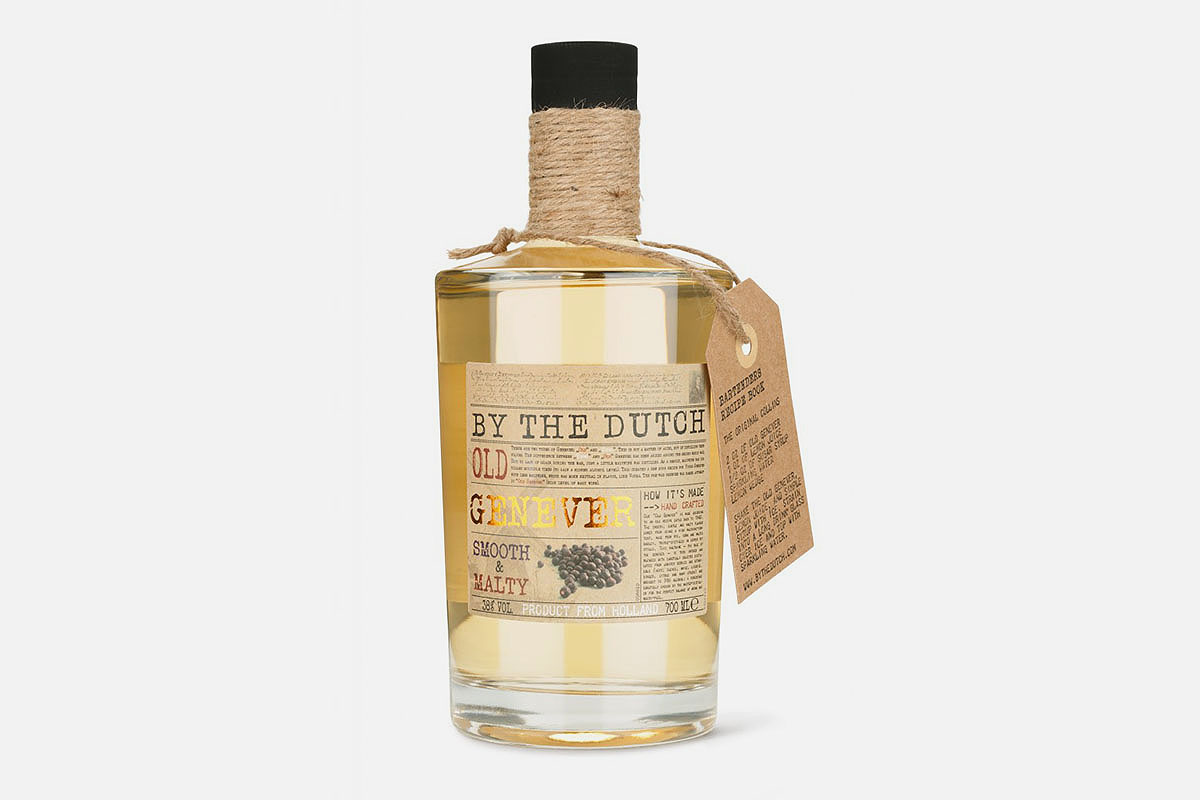
By the Dutch
For a light, approachable introduction to genever, By the Dutch fits the bill quite nicely. Distilled from barley, corn, and rye, it’s not too heavy on the malt and employs a citrus-forward blend of botanicals with hints of anise and licorice.
How to drink it?
Once you’ve picked out a bottle of genever, it’s worth trying neat or alongside a beer. Known as a kopstootje, or “little headbutt,” the pairing of malty genever with a crisp beer is an excellent match. You’ll probably get the most use out of mixing it, though. It’s a versatile spirit, so here are three very different cocktails to try it in.
If you like Old Fashioneds …
In mixology parlance, the “improved” cocktail improved on the original with accents of absinthe and maraschino liqueur. It’s just a step removed from the Old Fashioned and the whiskey-adjacent character of genever shines through in this drink; the Improved Holland Gin cocktail, as it’s known, may be the ultimate stirred drink with genever. Use a malty and perhaps barrel aged genever for this one, and if you’re tempted to add a dash of chocolate or orange bitters to the recipe below, don’t hold back.
2 oz genever
1 bar spoon rich demerara syrup
1 scant bar spoon maraschino liqueur
Rinse or dash of absinthe
2 dashes of Angostura bitters
Lemon peel for garnish
Stir with ice and strain into a rocks glass over ice or a single big cube. Garnish with a twist of lemon peel.
If you like spicy margaritas …
When the Holland Razor Blade first appeared in Charles Baker’s 1939 book The Gentleman’s Companion, it was a bracing combination of genever, lemon juice and cayenne pepper. Nowadays it’s served as a balanced sour, but the kick of cayenne remains. It’s a very fun use of genever with a kick of heat.
2 oz genever
1 oz fresh lemon juice
½ oz rich simple syrup
Pinch of cayenne, for garnish
Shake and serve in a chilled coupe, sprinkling cayenne over the surface of the drink for garnish.
If you like Mai Tais …
The traditional Mai Tai achieves its complexity by blending different rums. The Transcontinental Mai Tai, a drink I made for a bar in Portland, takes a similar approach with grain spirits. It’s part genever, part rye whiskey, keeping the basic structure of the Mai Tai intact. It’s a little bit tropical and very refreshing.
1 oz genever
1 oz rye
1 oz fresh lime juice
¾ oz orgeat
½ oz orange curacao
Mint, for garnish
Shake with ice and strain over ice. Garnish with a generous bouquet of fresh mint.
Join America's Fastest Growing Spirits Newsletter THE SPILL. Unlock all the reviews, recipes and revelry — and get 15% off award-winning La Tierra de Acre Mezcal.
